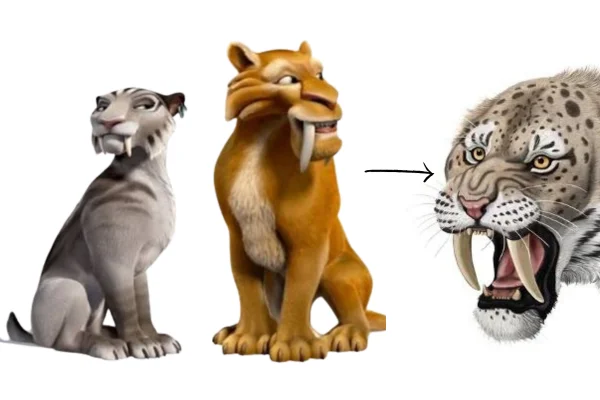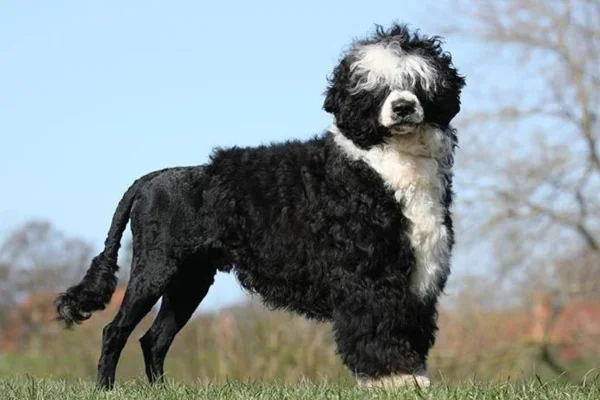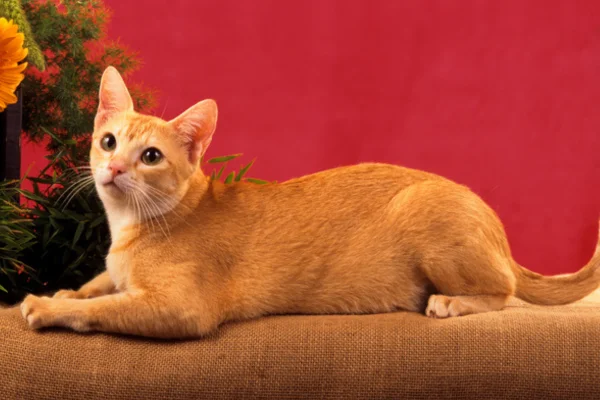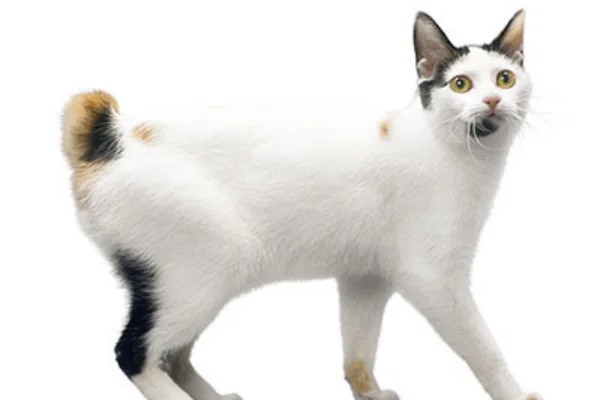Ice Age Animals
The rich and diverse fauna of the Ice Age served as a powerful source of inspiration for the world of cinema, giving rise to one of the most beloved and popular films: "Ice Age". This captivating movie took viewers on a lively and adventurous journey, featuring iconic characters that echoed the animals that inhabited this fascinating geological period. With woolly mammoths, saber-toothed tigers, giant sloths and other extraordinary beings as protagonists, the animation managed to recreate a prehistoric world in a fun and engaging way, winning the hearts of children and adults around the world.
The Fascinating Animals of the Ice Age
The Ice Age, a geological period marked by extremely low temperatures and extensive ice sheets covering large portions of the Earth, was inhabited by a variety of animals adapted to challenging conditions. These extraordinary living beings faced an icy and challenging environment, leaving an intriguing legacy for modern science to study.
Manny: Woolly Mammoths
Among the most iconic animals of this period is the woolly mammoth (Mammuthus primigenius), a gigantic hairy mammal from the elephant family. Adapted to the intense cold, these mammoths had long curved tusks and a thick layer of hair, offering protection against extreme temperatures. Despite their extinction, their fossils have been a source of valuable information about life in the Ice Age.
Contents
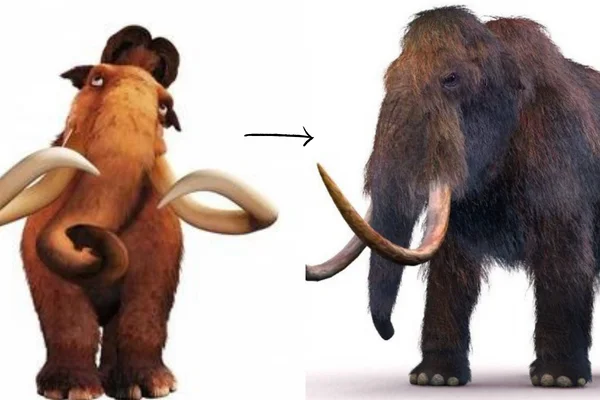
Diego and Shira: Saber-tooth tigers
Another prominent figure was the saber-toothed tiger (Smilodon), a feline with impressively long and curved fangs. This formidable predator specialized in hunting large prey, using its fangs to immobilize and slaughter its victims. Its extinction left a gap in the fauna of the time, but its intriguing adaptations continue to fascinate researchers and enthusiasts.
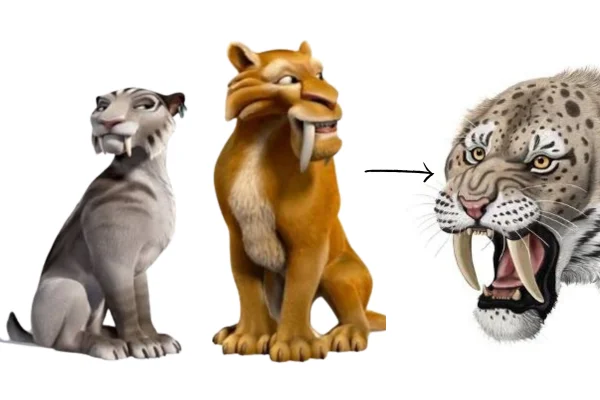
Sid and Brooke: Giant sloths
Not all the inhabitants of the Ice Age were predators. Giant sloths (Megatherium), large herbivores, roamed the ancient landscapes. Despite their name, these animals didn't move as slowly as their modern counterparts. With impressive claws, they were able to feed on the highest foliage of trees, representing a crucial part of the food chain of the time.
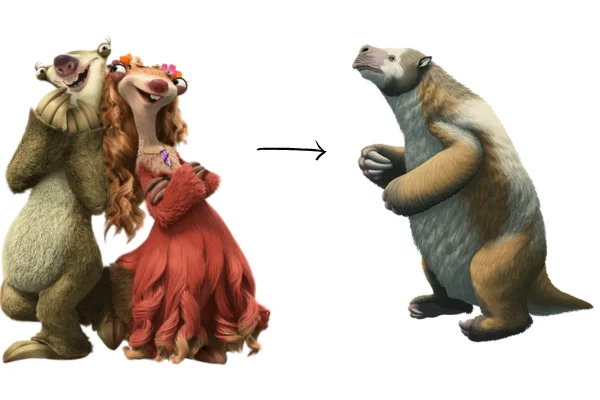
Scrat and Scraty: Saber-toothed chipmunks
Scrat and Scraty, the charismatic saber-toothed squirrels, are remarkable characters that represent the species Cronopio dentiacutus, an extinct prehistoric mammal whose remains were discovered in Argentina. These peculiar animals stood out for their long, narrow snouts and well-developed canines, despite their small size, measuring between 15 and 20 centimeters. In the plot of the film, their journey is centered on their tireless search for a nut, showing an obsessive care for this object.
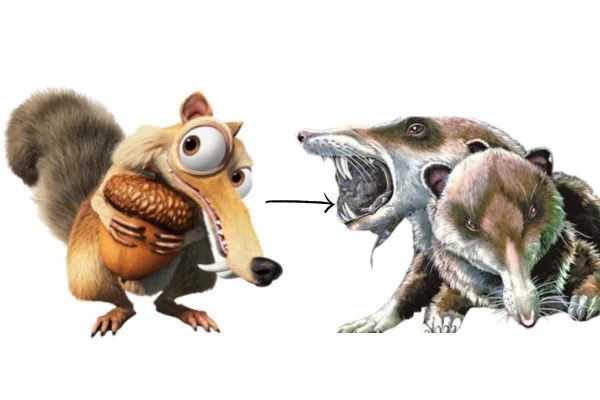
Dab, the dodo
Dab, the dodo, represents a peculiar species, Raphus cucullatus, a bird that was endemic to Mauritius, an island paradise in the Indian Ocean. Although it resembled pigeons, the dodo had terrestrial habits and was a flightless bird. Scholars estimate that it reached a height of around one meter and weighed approximately 10 kilos. Unfortunately, human presence contributed significantly to the extinction of this bird when humans entered its habitat. Unbridled hunting and the introduction of other species that competed with the dodo for resources led to its disappearance, making it easy prey for newcomers to its natural environment.
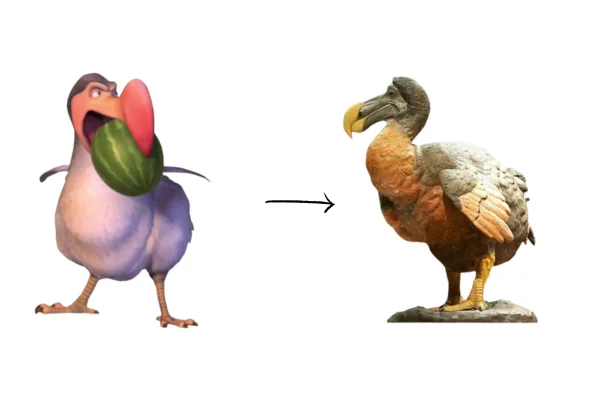
Crash and Eddie, The Skunks
Crash and Eddie, the adorable and quirky possums who appear in the second part of "Ice Age 2" alongside Ellie, are representatives of the marsupials typical of the Americas. The evolutionary history of these animals goes back millions of years, coinciding with the era of the extinction of the dinosaurs. Studies have revealed that opossums have their origins in the species Mimoperadectes houdei, a remote ancestor that has left important traces for us to understand the trajectory of these small marsupials over time.
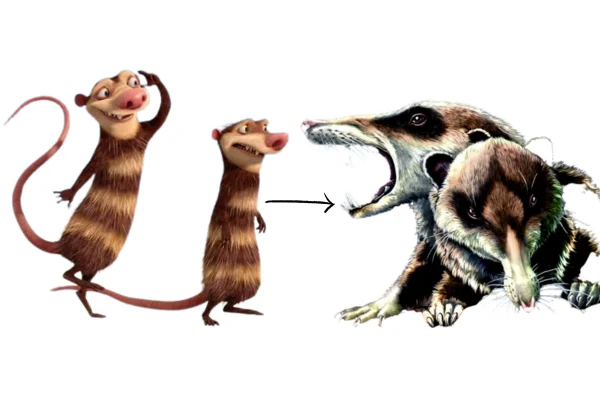
Cave bears
Cave bears (Ursus spelaeus) were close relatives of modern brown bears. Living in caves during the winter, these robust animals adapted to life in the Ice Age. With powerful claws and a massive body structure, they were formidable predators, hunting prey or feeding on carcasses left behind by other predators.
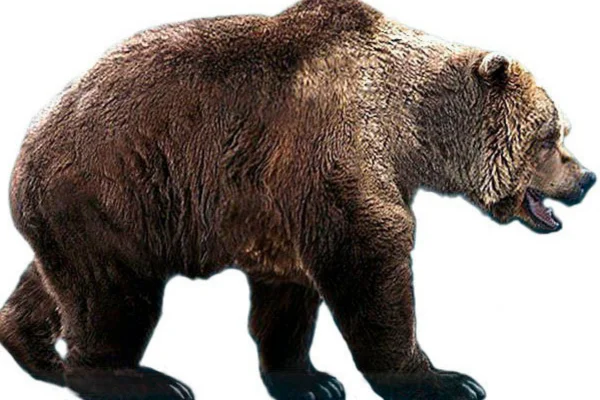
The Mysteries of Extinction
The mass extinction that marked the end of the Ice Age still intrigues scientists. Climate change, human hunters and a combination of factors may have contributed to the disappearance of these magnificent species. The arrival of Homo sapiens in North America, for example, coincides with the extinction of many of these animals, raising questions about the role of humans in the extinction of megafauna.
Legacy and Importance
The study of Ice Age animals not only reveals information about the Earth's distant past, but also offers valuable insights into ecology and evolution. Understanding the adaptations of these animals to extreme environments can help scientists better understand how modern species respond to current climate change.
In addition, popular fascination with these animals drives paleontological research and public interest in biodiversity conservation. The preservation of endangered species today can be seen as a way of honoring the legacy of these magnificent animals of the past.
Conclusion: Ice Age animals
The animals of the Ice Age are fascinating witnesses to a unique period in Earth's history. Their amazing adaptations to life in a hostile environment and their mysterious extinctions continue to intrigue and inspire humanity. Studying these ancient creatures not only allows us to better understand our past, but also provides valuable perspectives for tackling contemporary environmental challenges.
The wealth of information that the fossils of these animals offer is a window into a lost world, reminding us of the importance of preserving biodiversity and understanding the complexities of our ever-changing planet.
Thanks for stopping by, check out our other work too
https://vettopbr.com/tosse-em-caes/

